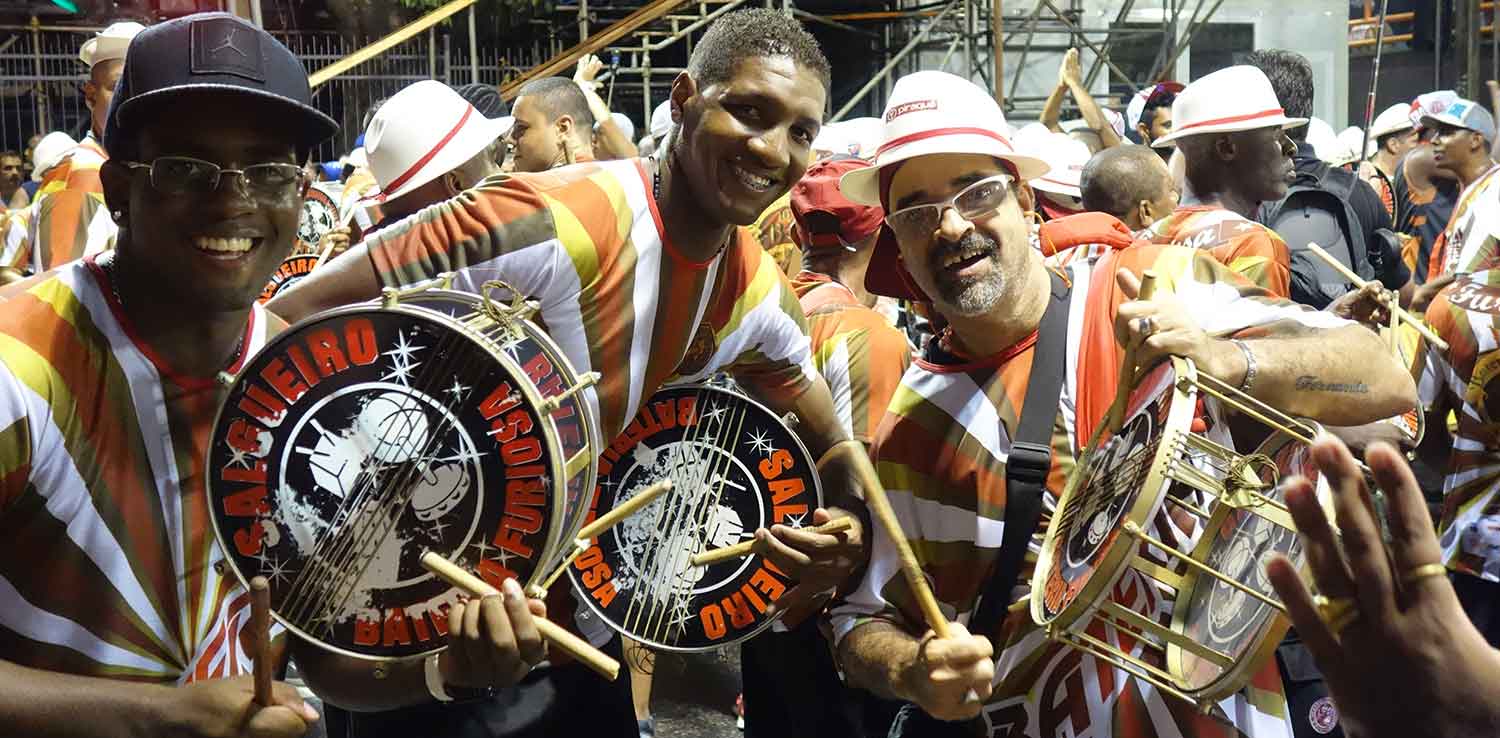
Caixa
The caixa is probably the most European samba instrument, which evolved from the Portuguese marching drum. However, caixas in Rio today are played with guitar strings on the upper drumhead instead of the traditional snare wires on the resonating head below.
The caixas are something like the carpet of a bateria and function like glue that holds the rhythm together. With often around 100 players, it is the most represented instrument in the bateria of an Escola de Samba and almost always plays the same rhythm.
The Caixa is played in 2 different techniques:
1) "em baixo" (on the belt in front of the body)
2) "em cima (without a belt in your armrest)"
The technique of the caixa "em baixo" is very similar to that of a marching drum, with the weak hand holding the stick mostly in the "traditional grip". There are some traditional grooves for this style of playing.
In the samba school Vila Isabel, for example, they play "1 por 1", which is known in Europe as the samba base. They play hand-to-hand all 16th notes and emphasize each beat.







